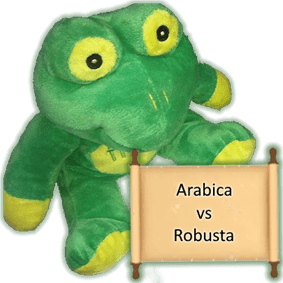In this newsletter, we will carry on with our introduction into the coffee process by covering wet-hulling. We will also discuss our current issues with sourcing our quality coffees and will introduce coffees coming before the year-end break.
We will also cover our new gear combos for the home that we are offering and are being well received. And of course, our closing dates this year.
The newsletter is a long read, but we have a lot to cover. So either line up the espressos, or make a Chemex or pot of plunger coffee if you want to read in one sitting.

Wet Hulling
Wet-hulling (also called Gilling Basah) was probably first invented by the Dutch after first acquiring the coffee plant via India and colonising Indonesia in the 1700s. The first major European coffee plantations were established in and around Java (hence the link between coffee and java).
Before we go further, we need to explain what hulling (or milling) is. Hulling uses several methods of removing anything that is not the pip of the plants produce. In rice, spelt, wheat and other grains it is used to remove the husk, generally by either thrashing or rubbing. For coffee, the protective layer is customarily called the parchment, and this needs to be removed to assist in roasting the coffee. There is still a layer underneath that is called the silver skin, that I tightly wrapped around the pip, and usually only is removed by roasting. Typically the silver skin is shed, as the coffee bean expands during the roasting process.
The difference between a coffee that is wet-hulled (and the methods we have already covered in the previous newsletter) is linked to the fact that when the coffee is hulled the moisture level of the pip is around 30-40% rather than the previous methods we have covered, where it is about 10-12%.
Wet-hulling is mainly used in Indonesian countries, and it is believed to be linked to the dominant spicy notes found in coffees from this region. Indonesian coffees that now use the methods we have already covered are available. The result is cleaner and sweeter coffee (in fact our current Indonesian Kerinci is one of them). However, we have still found the spicy notes prevail, even if not as a primary flavour.
We have collated several videos on processing which we have published into a single post you can access via our website. The post is called Videos on coffee processing. Here we summarise the processes we have covered, with some region specifics, too.
Did you enjoy reading this, and would you like us to cover more processes? There are several lesser-known like monsoon and biologically processed. Let us know if you want us to continue.
Sourcing issues
Since 2008 we have tried to source as many coffees as direct as possible. We prefer as few people between the farmers and us. Sometimes we are lucky and work with great coffee people like Caravela, who are the only people between the producers and us. Caravela does not work with agents and only sell directly to roasters making sure the producers get the bulk of what we pay. Caravela started in Colombia, and have expanded over the last few years into most of Central America, Peru and Bolivia. For our Colombians and a growing number of our Central Americans, we work with Caravela pre-harvest using forward planning to determine how much coffee of a minimum quality we will need as part of the upcoming harvest. We typically order coffees 5-6 months before we will get them in South Africa. Working like this is ideal and allows us to offer the latest crop of coffees.
Other companies we use to source coffees, typically have local representation at origin, they then consolidate the coffees they source either in Germany, the UK or even Durban. Once these coffees land, they are available on SPOT. Since 2015 we have been trying to work with several of these partners with forward planning. Meaning we commit to minimum amounts from farms and regions we want to work with. While we have had some success with this, it has been limited. An example of where it has worked is the Yirgacheffee Grade 1 coffees we have offered since 2015 and the current Brazilian, Sao Paulo.
However, the commodity coffee market (which is mainly driven by volume and screen size, rather than quality) collapsed in 2017, and as a result, many of the partners we have worked with to source specialty were severely affected. The side effect has been that the larger commodity companies looking for value in the market went on a spending spree buying up many of the coffee companies that had specialised in specialty grade coffee rather than the commodity coffees that represent around 85% of the world market.
Another side effect is that many of the partnerships we had to establish with smaller quality-focused coffee agents have also more or less collapsed. As a result we are looking at a future where we are going to have to choose to work with new partners to get the coffees we love that still offer value, or we need to tow the line and work with the larger parent companies, some of who are not just coffee agents, but work with other commodity-based markets like cocoa and palm oil. With large multinationals their primary clients, it means we may need to sacrifice our ethics to deal with these companies. An example of this is the long miles coffee project coffees we used to be able to source almost direct. OLAM essentially acquired the project (well, most of their production was) and so for us to source these coffees that we had a 6 year involvement with, means working with OLAM, who have been called out by the international press and other people committed to sustainable practices for their work with Palm Oil, and cocoa.
Why is this important?
When it comes to any of the origins that we were able to work with on forward planning or at least pre-harvest assessment so far, we are probably going to have to work hard again at establishing new relationships with new small and more direct partners. Hence, some of the coffee origins we have fallen in love may no longer be available to use unless we deal with large multinationals, who have little to no interest to work with a small scale coffee roaster based on the tip of Africa buying a tiny amount of coffee a year. So essentially this is a heads up. While we are working hard at establishing these relationships, at the moment when it comes to many of the coffees we have grown to love, we have no clear path forward on how to source them.
We may, in the meantime, be forced to offer coffees that already warehoused in South Africa like most of the South African coffee roasting industry does, and we do for our commodity-based coffee offerings.
Naturals
Since our last Gishubi roast, we have been shopping around for almost any good quality SPOT coffee that is an excellent example of an African naturally processed coffee. We have tasted a few Central American naturals, and we may look at holding them (including the unique auction lot we will mention later).
While we are looking we may be hopping around trying different African naturals that are good, but for us, the end goal is something great, like Gishubi was. Currently, the one we are offering is called Fugi, from Rwanda.

Coffees about to be released
Since our last newsletter, we have had added some new coffees to our offering. While that alone did not prompt us to publish a newsletter (blame the rain, I was lazy) these coffees are Kerinci, Tolima and the new Rwandan natural. While Facebook has lost favour, we do still post out new coffee releases on twitter, facebook and Linked-In. So, what is coming in the next few weeks? Some coffees to treat yourself to for the New-Year break (assuming you are taking one).
Yara
We have offered a microlot from Edilfonso Yara in 2016 just after we had visited Colombia. Since then we have not been able to secure a microlot from them, due to larger international roasters buying the lots. We put our name into the hat early, and we now have a microlot from Edilfonso and his brother’s farm. They are currently working together and can offer more microlots. We plan to release this microlot within the next week or two.
Mexican auction
Earlier this year we attended the Caravela Mexico Aromas auction. On the auction, we bought a naturally processed typica. This coffee will land in Cape Town the first week of December, and we hope to get it in the roasta er for Christmas. We will do an exclusive update for this coffee as it will be available on the secret list for those that subscribe.
Old Favourite
At the Vineyard roastery, we have an old favourite from the region of Antigua in Guatemala, Cafe Pulcal from the farm Carmona
Combo offerings
You may have seen that we now offer combinations of equipment. The ones that are proving popular are our home barista offerings with the Rancilio. One combination offers you what we consider a great entry-level kit to enjoy quality espresso at home. We currently offer 2 combos: one with the standard Rancilio Silvia and one that’s upgraded with a PID. These kits have been put together based on our past experience working with the Rancilio Silvia, and we believe offer a great solution.
Closure Dates
We will be closing from Friday 20 December 2019 until Monday 6 Jan 2020. Our last delivery day will be Thursday 19 December 2019, and our first will be Tues 7 Jan 2020.
2019 has been a challenging year. Getting to the end of it and still being able to offer great coffee has been a significant achievement. This achievement has only been made possible thanks to the support of you, our customers. You make our day with every order, every time you pop in and grab a bag or box, and every time you send someone our way. With your support, we have made it through 2019, and look forward to 2020.



